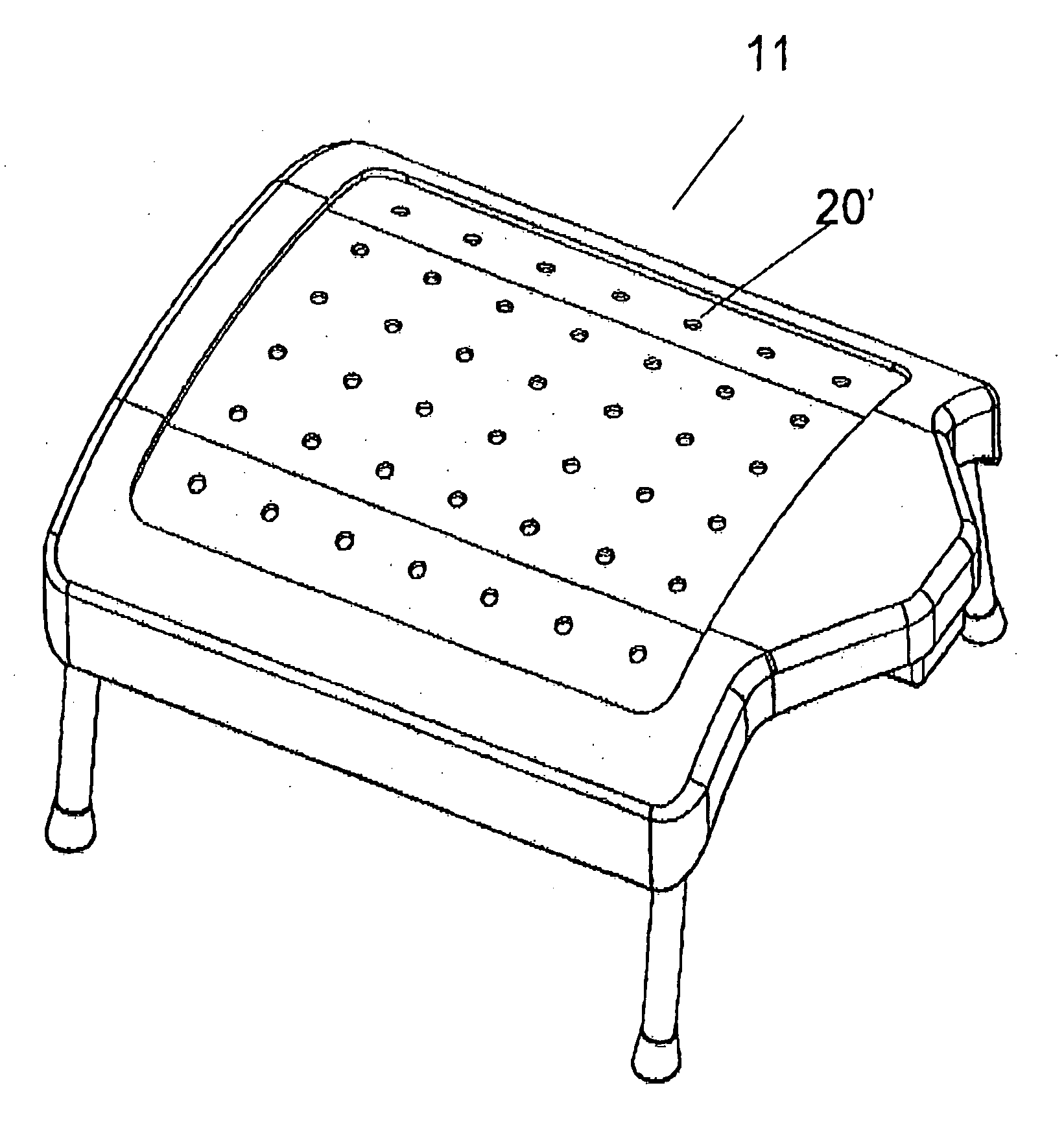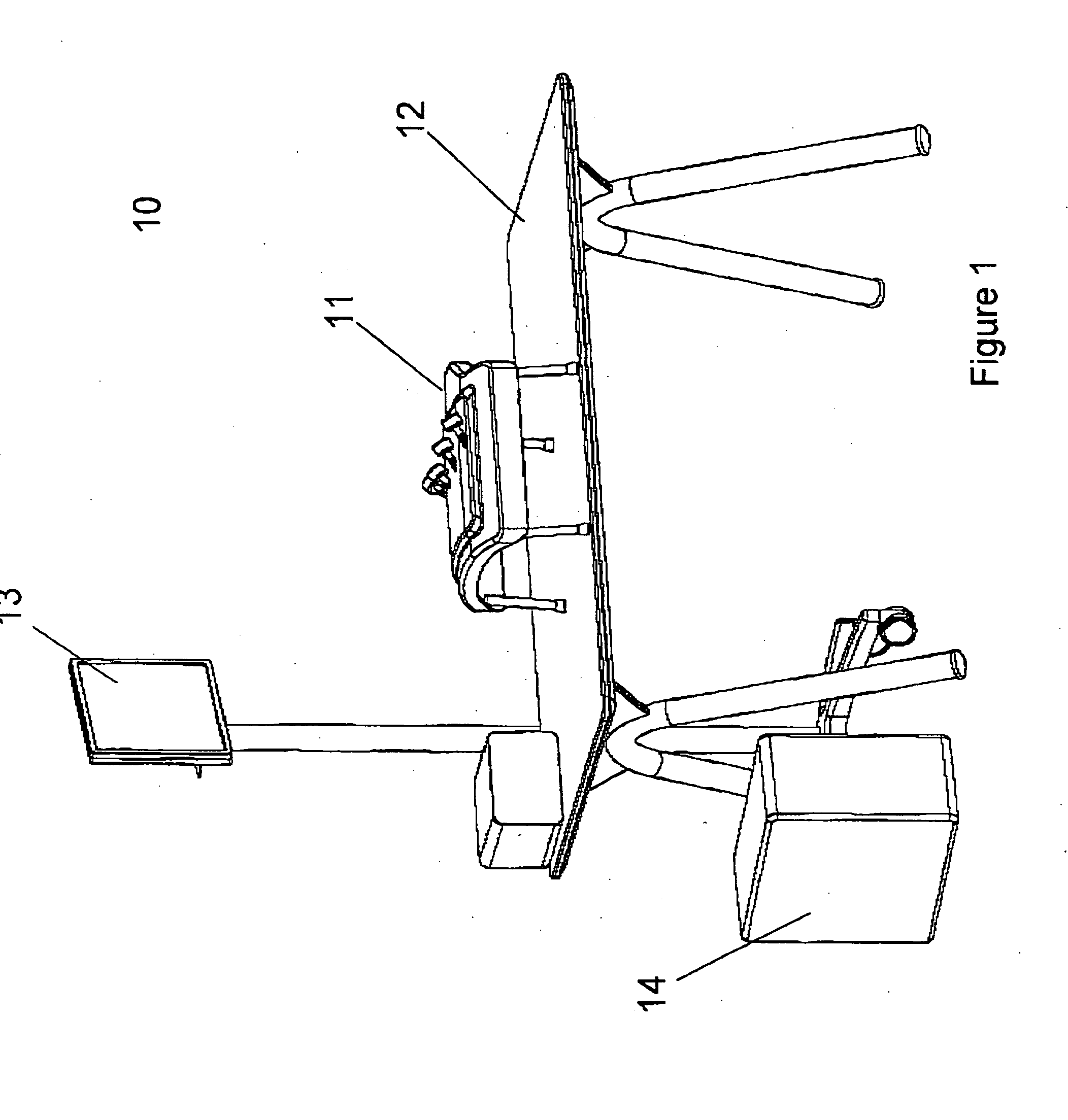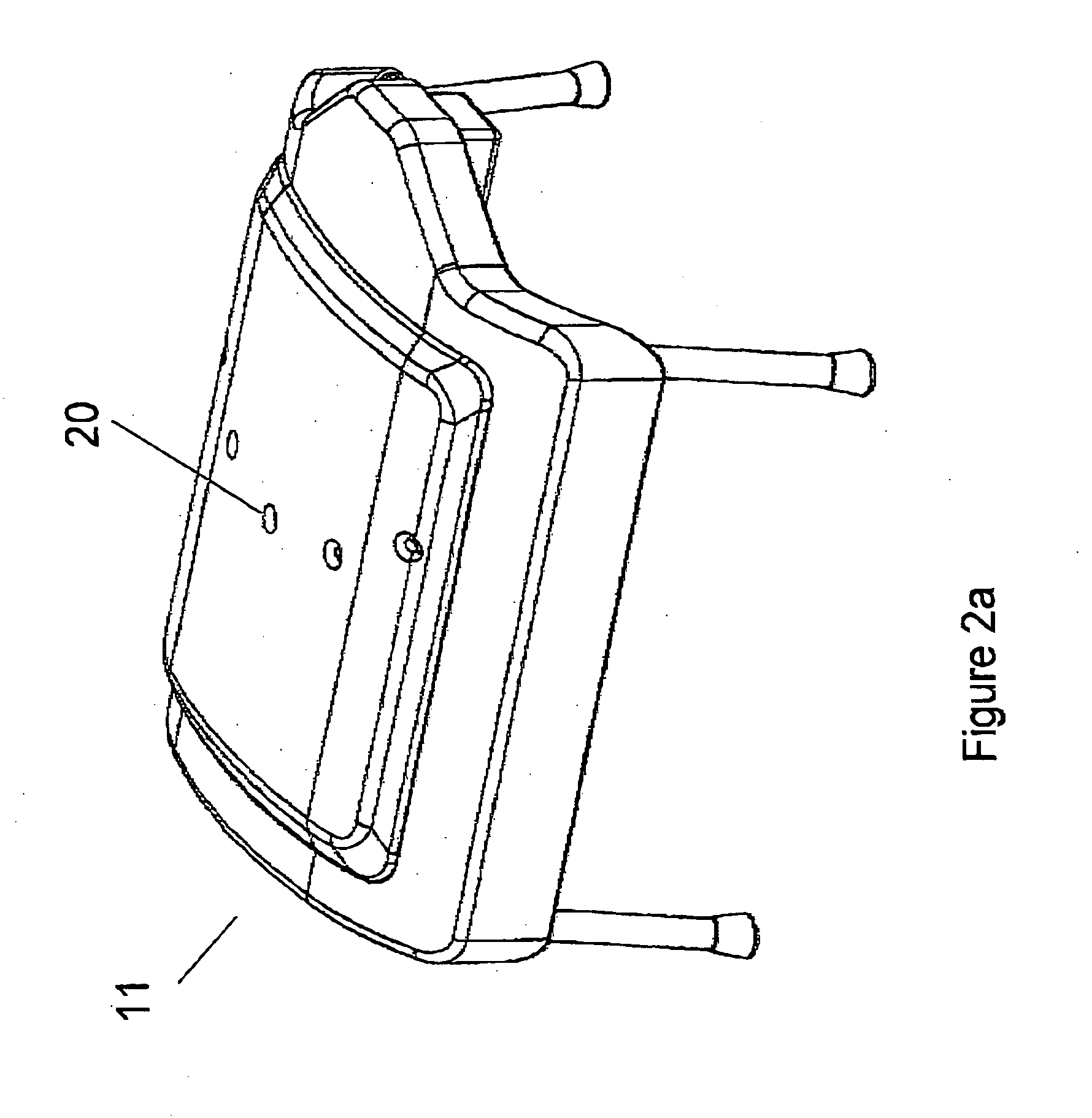Kit, operating element and haptic device for use in surgical simulation systems
a surgical simulation and operating element technology, applied in the field of surgical simulation system kit, operating element and haptic device, can solve the problems of time-consuming mechanical trainer assembly, serious injury or death, and new procedures that require significant training
- Summary
- Abstract
- Description
- Claims
- Application Information
AI Technical Summary
Benefits of technology
Problems solved by technology
Method used
Image
Examples
Embodiment Construction
[0045]FIG. 1 shows an overview 10 of a simulation system for surgical simulations. The system comprises a kit according to the invention comprising an operating element 11, which constitutes a patient mannequin, standing on a table 12 and haptic devices (not shown) which correspond to surgical instruments / tools / devices of a real operation. The signals regarding movement and manipulation of the haptic devices are processed by a computer 14 and shown on a screen 13 in real time, thus giving the user the impression of a real operating situation.
[0046]FIG. 2a shows an embodiment of an operating element 11 according to the invention for simulating laparoscopic operations. The operating element is in this embodiment curved, thus e.g. resembling an abdomen, and has 5 holes 20 for inserting the haptic devices. The holes 20 may be adapted for the specific procedure which is to be simulated. In one simulation procedure, some or all of the holes may be used. The holes 20 constitute pivot poin...
PUM
 Login to View More
Login to View More Abstract
Description
Claims
Application Information
 Login to View More
Login to View More - R&D
- Intellectual Property
- Life Sciences
- Materials
- Tech Scout
- Unparalleled Data Quality
- Higher Quality Content
- 60% Fewer Hallucinations
Browse by: Latest US Patents, China's latest patents, Technical Efficacy Thesaurus, Application Domain, Technology Topic, Popular Technical Reports.
© 2025 PatSnap. All rights reserved.Legal|Privacy policy|Modern Slavery Act Transparency Statement|Sitemap|About US| Contact US: help@patsnap.com



